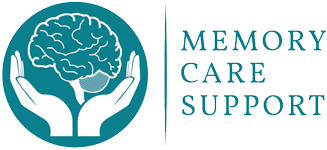
2021 has been another extraordinary year and I’ve had the privilege of working with some exceptional teams as they’ve come together with grace and strength to unravel seemingly unsolvable challenges.
I thought I’d share some of the Best Practices I’ve observed this year:

One nursing home I worked with faced the same staff shortages and burnout that so many senior communities are experiencing. The leadership realized that the lines were blurred between management and direct care members – it was everyone’s job to provide good care! The team held meetings to discuss priorities and leadership heard loud and clear that direct care staff didn’t feel supported or acknowledged for the extra shifts they were working.
All leadership agreed to spend part of each work week assisting in care. A review of how their time was spent revealed many unnecessary meetings, conference calls and redundant planning sessions which could be cancelled without greatly impacting their ability to achieve their goals. Each leader committed to 2 days of working on the floor each week and assisted in meals, engagements, and direct care.
After three months, a survey showed improved family and resident satisfaction and no staff turnover during that time. Leadership said they had learned 2 valuable lessons: how to increase their efficiency to continue to complete their jobs and how hard the direct care staff worked every day.
The nursing home administrator said the lessons learned from this experience have greatly improved the quality of care and the sense of teamwork and that going forward, it will become part of all leadership job descriptions to work a minimum of 8 hours per week in direct care or engagement with the residents.
At the holiday party this month, the care staff is planning on handing out achievement awards to the leadership team for “most creative resident engagement”, “best bed bath”, and “best entertainment”! 😊

In this extraordinarily challenging year, I saw a team at an assisted living begin weekly meetings with every staff member describing a positive action they had observed by another team member in the past week. With the stress of extra duties, it had become too easy to only focus on the negative.
The team found it was meaningful to bring attention to the hard work individual staff members took to keep residents safe, as well as special moments such as when staff took extra time to hold a resident’s hand when they were lonely, or time spent talking with a resident to ease their fears, and how staff came together to solve problems as a team – they were stronger together!

When a resident moved into a memory care unit this year, both the resident and her daughter expressed dissatisfaction with the entire move-in process and overall customer service. After listening to the resident and family member, the Executive Director thought that many of their complaints were reasonable and in fact the team had not done a good job of welcoming this new resident.
Thinking there was an opportunity for the team to gain insight, she asked if the resident and family member would be willing to be interviewed by the team and they agreed. All managers and supervisors interviewed them and met later to discuss their findings. Some of the comments from the staff included:
“I forgot how it feels to be the “new person” and not know anyone or where to go.”
“We really didn’t go out of our way to make them feel welcome.”
“Leaving her home was traumatic for her and we never tried to make her feel better.”
“We thought after the first day or two she would feel comfortable but it can take a lot longer.”
“She felt like she didn’t have any friends.”
“It’s the little things that can make a difference.”
The Executive Director now regularly schedules two meetings with all new residents and family – one meeting on the second day and another one in two weeks and considers these meetings essential to maintaining a welcoming culture.


Anne Ellett, N.P., M.S.N.
949 933-6201
AEllett@memorycaresupport.com
www.MemoryCareSupport.com


